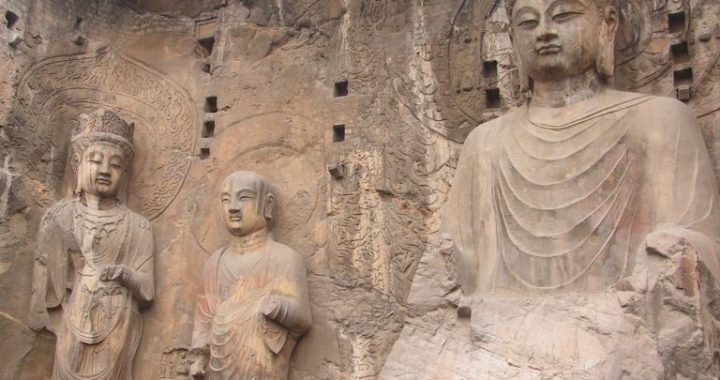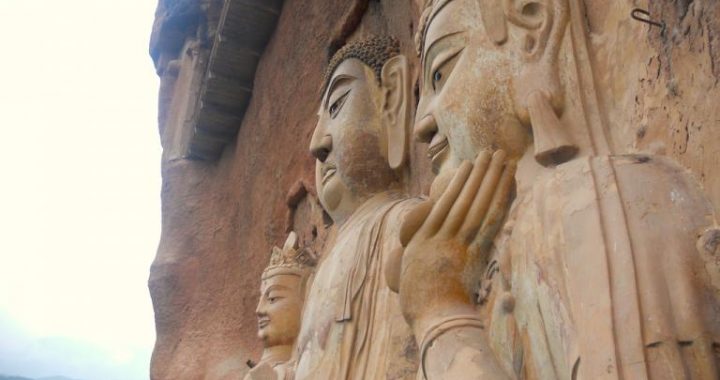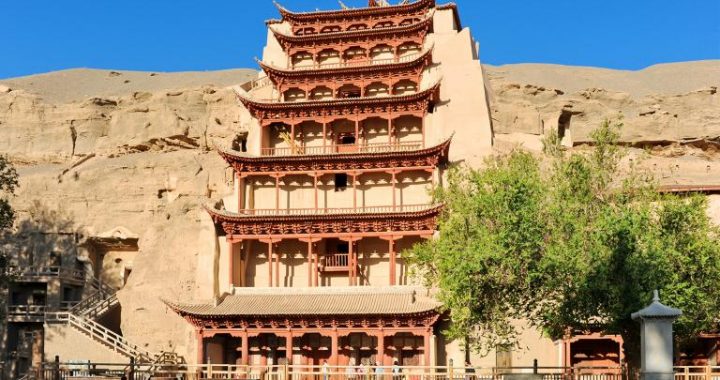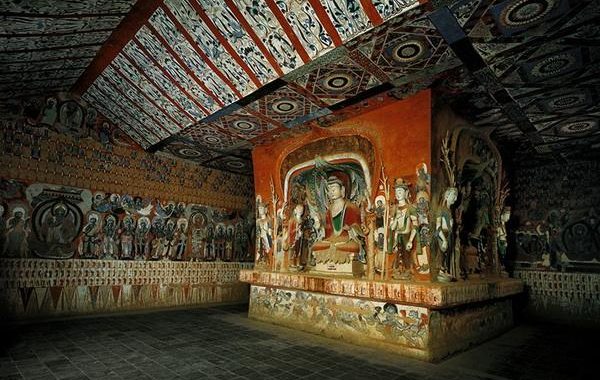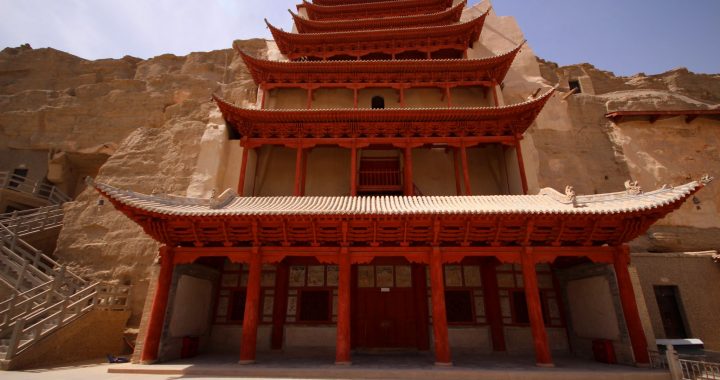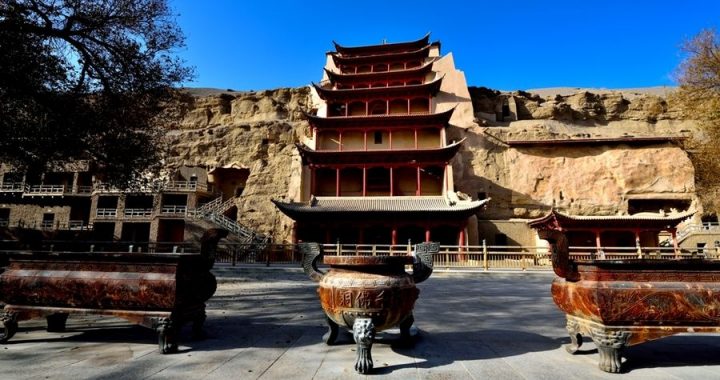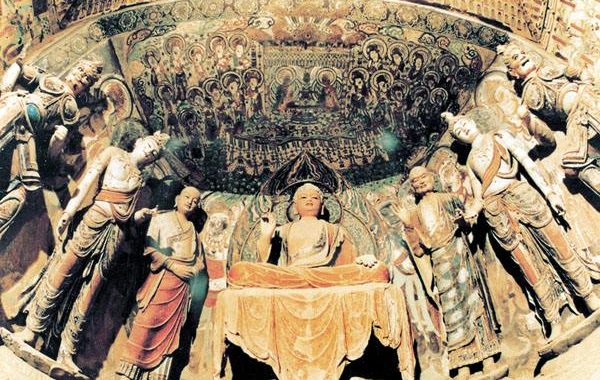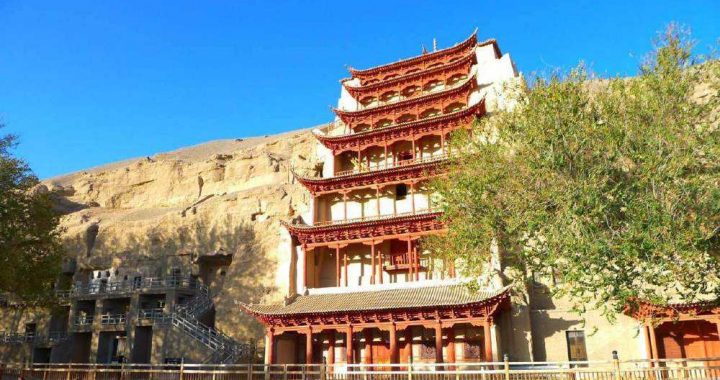Heritage: Mogao Caves
5 min readThe edge of the Gobi Desert, Dunhuang may seem like an unlikely place to find an asis of Buddhist art. With towering sand dunes in the background, the caves here reflect the power of divine inspiration.

One summer day in 1900, Wang Yuanlu, an unassuming Taoist priest who lived nearby, stumbled into a cave that had been covered by a rockslide. His accidental discovery would lead to one of the most significant collection of Buddhist artifacts ever uncovered.nside the cave were artifacts dating from the 4th to 14th century, a complete collection spanning approximately a thousand years tracing the development of Buddhism from its initial arrival in China. A cornucopia of treatises on subjects ranging from history to politics to the military and science, Buddhist sutras and even personal documents such as tax receipts were discovered preserved within a dry dark cave. In fact, so much material has been found that the discovery has led to a new branch of academic study called Dunhuang Studies.
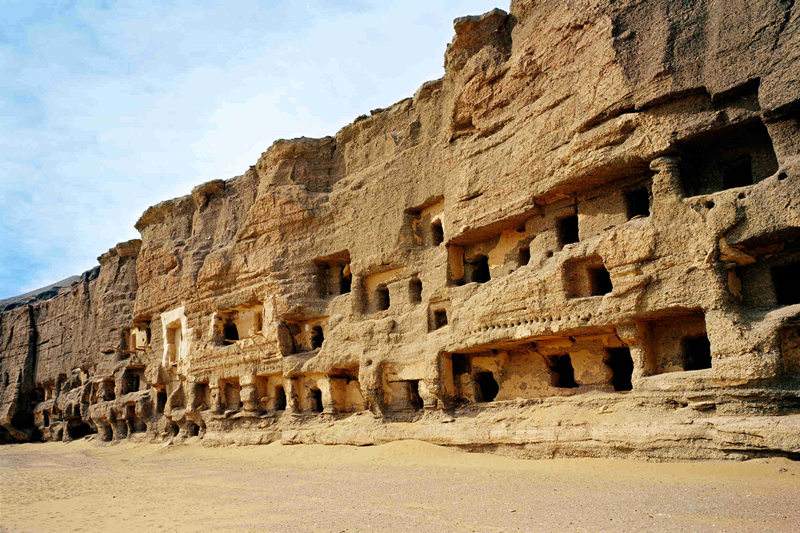
A beautiful mural of a flying apsaras at the Mogao Caves.
Unfortunately most of the documents are now in museums and collections scattered across the world; the invaluable Diamond Sutra, for example, the earliest printed book, is now held in the British Library. While the documents may have been dispeen dispersed, the caves still hold a treasure trove of statues and wall paintings .(mogdok Today Dunhuang is a relaxed town in Gansu Province with the Mogao Caves (mogao ku), where the famed carvings are located,15.5 miles(25km) to the southeast. Once an important oasis town on the Silk Road, Dunhuang lies close to the border of Qinghai, Tibet and Xinjiang. In 111 BC, under the Han dynasty, the Great Wall was extended here. tegic position meant that city it’s hard to picture the importance of ancient Dunhuang. Its strategic position meant that it was an important transit point for the spreading of Buddhism, which entered China during the 3rd century AD. As Buddhism developed, so did the city. During the 4th century, Dunhuang was the last stop for Chinese Buddhist pilgrims on the road to Inc the first stop for arriving missionaries.

In AD 366, Le Zun, a Chinese monk on his way to India, had a divine vision of Buddha, which led him to he was on holy ground. In his fervor, he began carving out the km) sandstone cliff face. Development continued through 10 dynasties peak during the Sui and Tang dynasties. Though the Sui dynasty lasted a short 38 years, Emperor Wendi was a fervent Buddhist and during his reign 101 caves were carved, over twicce as many as in the previous 180 years.nasty, China’s golden age of economic prosperity and openness.when A community of monks, craftsmen and artists lived at he caves, getting their water from the mountain fed Daquan River that flows in front of Central and ltural influences. Of the over 1, 000 Tang era caves, 232 have ing 492 surviving caves. Most importantly, the Tang dynasty ally developed. are open to visitors, though others maybe opened for a high fee. About 484,000 square feet (45,000 m2of wall paintings and over 2, 400 Buddhist sculptures ave been preserved in is dry desert climate. The paintings themselves are a priceless resiod. In 9enting the changedan lifestyle religion and culture over a thousand-year urce period. In 1987 the caves were added to the UNESCO list of World Heritage Sites.
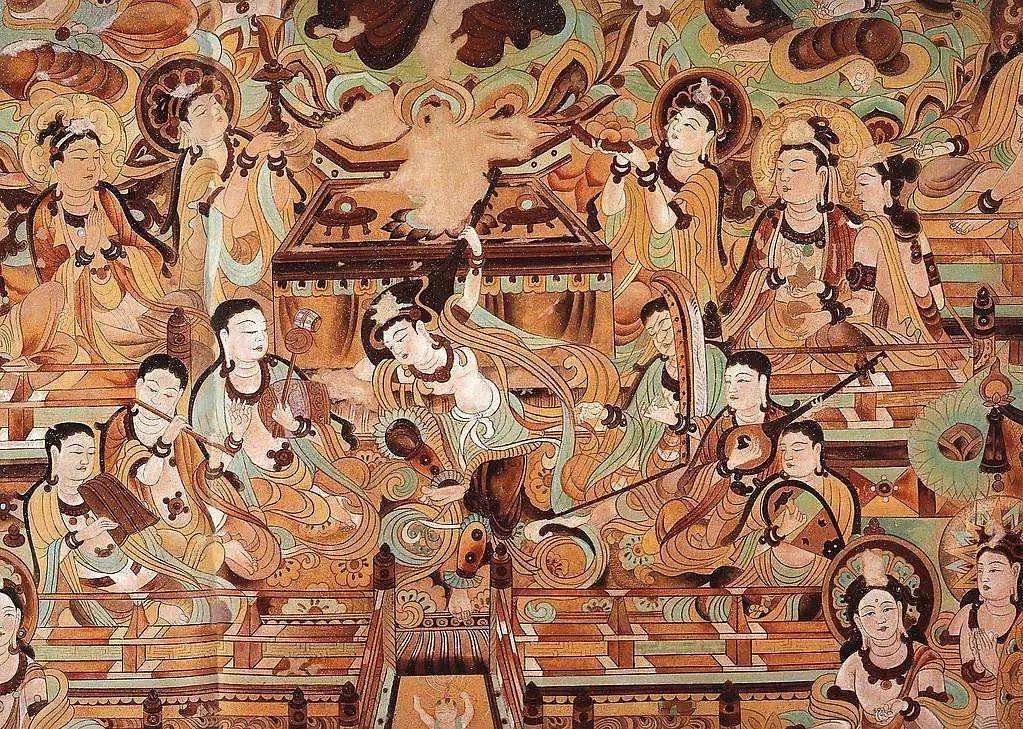
Reflecting the convergence of influences in this area, the architecture in the caves is a mixture of Chinese, Central Asian and Indian styles, which is more apparent in the earlier pre-Tang caves. After the Tang dynasty there wasn’t any space left to carve new caves, forcing artisans to re-work older caves. Some stylistic differences to look for are:he older statues tend to be stiffer and appear stronger with the lines are much more defined. Tang sculptures tend to be fluid, with flowing lines- this is especially clear when looking at the robes of the statues. Whereas earlier statues have severe and dour faces, Tang statues are lively and expressive.
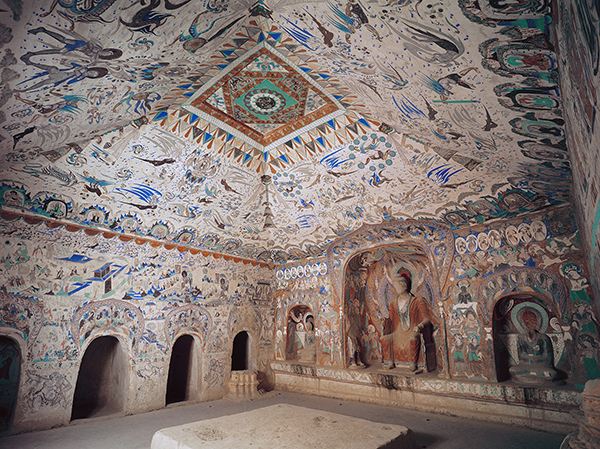
Quotes
The caves are amazing. The Buddhas definitely add a divine aura to the place. It’s hard to imagine people actually all these surfing; it sounded more fun than getting buried up to my neck.
Cave 328 is an example of the melding of two different styles. The sculptures in this cave date to the Tang dynasty, but the ceiling and wall paintings are from the Song dynasty. Inside are three statues of Sakyamuni flanked by two disciples. The artisans who worked on the sculptures, to emphasize that Sakyamuni wasn’t Chinese, painted a “typical on the statue. Take a close look at his mustache. To the right of the is a proud looking Ah Nan, one of Sakyamuni’s favorites. Standing to a skinny, his face showing the lines of a hard life. Caves and 100 are also clear examples of two different styles in a single cave.
For architecture aficionados, is a highlight. This is one of the largest caves and has a 113-foot-tall (34.5 m) tall Tang dynasty statue of Maitreya, the Buddha of the Future. There’s also a pagoda outside that’s the same height as the cliff. Only the core of the Buddha is the rock in this area is extremely soft and unsuitable for carving.

The craftsman and artisans had to use a terracotta-like plaster pasted over the rock, from which they would mould and carve the intricate details. Smaller statues used a wooden skeleton that with plaster.paineeds, hemp and mud before being them with lively colors bringing them to the remaining ones highly valuable and a focus of were made this way have survived, making life. Not many of the Tang dynasty sculptures that were madeeffor preservation efforts efinitely the big draw at the caves If the paintings were lined up end to end they would measure 15.5 miles (25 km). The paintings are so important as a historic record that scholars have dubbed them a “mounted library. Some paintings are Buddhist scr and sutras, while others illustrate the different ethnicities that passed through hies, traditions, clothing, even music and dancing ient painters. The different traditions and how they’ve evolved have been clearly recorded, from important life events such as marriages to mundane examples of the The area surrounding the caves also makes for an interesting diversion. Climbing to the top of the cliff offers a majestic view of the surrounding desert, mountain and oasis. West of the caves and south of Dunhuang is Mingsha Shan(mingsha shan鸣沙山), which means though it’s not really a mountain but a giant sand dune.If you re looking fter the solemn caves, this is the place to be. camel rides and therapeutic sand baths (imang buried up to your neck) are available activities. In the same oasis at theal area is the shallow fed Crescent Moon Lake (yueyd quan), which forms an dune. If sound similar to a flute can be heard, but if there are many people descending at oncebulri correcon becomes a thunderclap. The corresponding goes that horrific sandstorm buried an army that rested at this oasis and the sounds heard are those of the buried men trying to claw their way to freedom.
It’s best to go there in the late afternoon when it’s a lot cooler.
